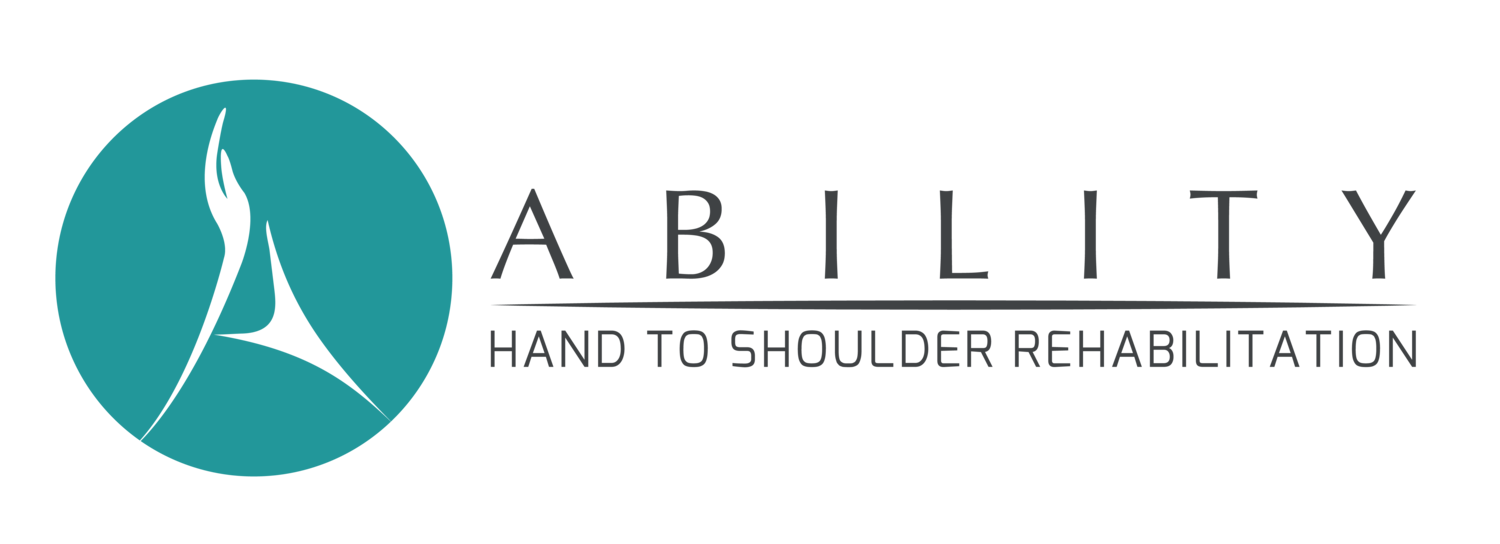Your first hand therapy visit: What should you expect?
I can’t speak for every hand therapy clinic or every hand therapist as I answer this question. There are many factors that determine what your first appointment may look like such as the location of the clinic, the number of therapists, and the overall philosophy of the management team. At our clinic, we believe in providing one on one, personalized care and we schedule a full hour for your first appointment.
Tips for the paperwork
Plan to arrive about 15-minutes early so that you can fill out the basic intake paperwork. If it is your dominant hand that is injured and you have a hard time writing, here are a few tips that may help:
Bring a friend or family member to the appointment to fill out the paperwork with you. You should tell them what to write, but they can write the information for you. This will limit your writing to your signature. For this option, make sure you check the clinic’s policies related to guests due to COVID-19.
Ask for assistance filling out the paperwork. If you are not able to bring someone with you to the appointment, a staff member will be able to help you fill out the paperwork. Remember, you are coming to a hand clinic. It is common to have issues filling out paperwork and it is absolutely fine to ask for help!
Call ahead and ask if you can get an e-version of the paperwork. You can have a family member help you fill it out before you arrive. Just don’t forget to bring it with you!
What is the therapist going to do?
The first appointment will involve a lot of questions. The therapist will want to know how you were injured, what types of imaging you have had done, and what types of treatments you have attempted so far. If you had surgery, the therapist will likely have a report from the surgeon. They will also want to know what activities you are having trouble completing. Think about basic things throughout your day…does your shoulder hurt when you put your coat on? Do you have thumb pain when you try to button your pants? Do you have trouble completing activities at work?
Next, the therapist will want to take measurements to see where you are starting so that they can track your progress. The types of measurements are based on the types of problems you are having. If you have limited motion, they will use a device to measure exactly how many degrees of motion you have at your joint(s). If you have swelling, they may use a measuring tape to see how much.
The therapist will also do some “special tests”. These are tests that will help them understand exactly what the problem is. For example, they may ask you to hold your hands out in front of you and resist while they press down on your middle finger. If this causes pain, it may indicate that you have tennis elbow.
Remember, all of these tests serve a purpose! They help the therapist determine how best to help you!
Is it going to hurt?
You can ask any of my students and they will tell you, I DESPISE the saying, “No pain, no gain”. If you are injured, there is a reason for your pain. Pushing through the pain often only makes it worse. At the first visit, I typically ask my clients to complete “pain free” movement (“reach overhead, but stop when you start to feel pain”). When I am testing strength, I typically ask my clients to complete “pain free” gripping (“squeeze this but stop if you feel pain”). The presence of pain helps me to determine where the malfunction is so that we can help your body heal, but it is typically not beneficial to force any joint into an extremely painful position.
What happens next?
At the end of the appointment, the therapist will share the findings with you. They will give you a recommendation on how many times they think you need to come to therapy each week. If you have financial or insurance constraints, share that with them. The number of times you are scheduled for therapy per week needs to be realistic for you given practical considerations like high deductibles or copays.
If you recently had a surgery, your first visit often involves some level of treatment. This may be making a custom orthosis (splint) and instruction in specific exercises and activities that you can begin at home. Remember that YOUR commitment to your recovery is just as important as your therapist’s! Make sure you get your questions answered and that you fully understand what you need to do at home.
